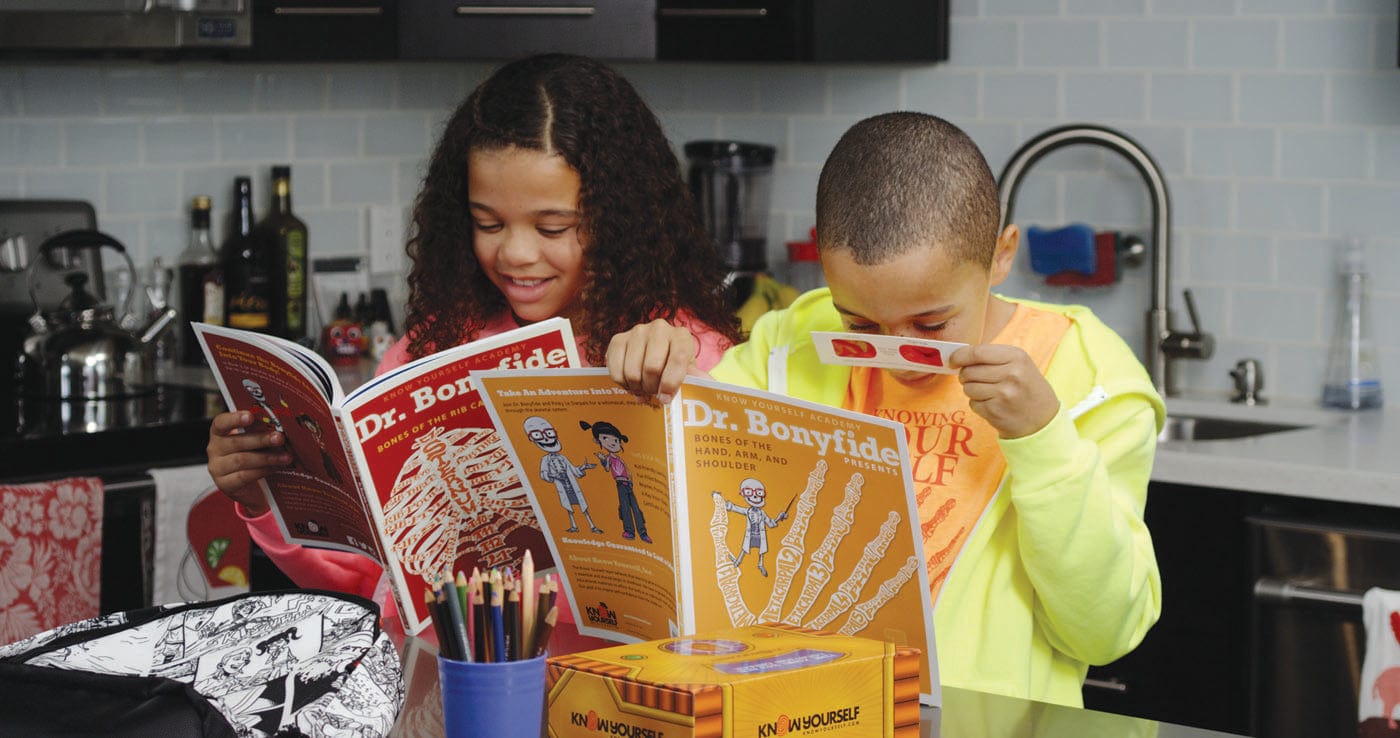
Despite this firsthand experience, do you know what makes slime unique?
Below, we share a fun way to explore the science behind slime to your kids!
Is slime a touchy object? It’s squishy, oozy and fun to play with!
Slime contains multitudes: It moves like a liquid, but can be picked up like a solid. When you pull it slowly, it oozes, but when you pull it too fast, it breaks apart! Slime in its resting form doesn’t have a shape, but can take on the shape of the container that houses it.
There is even a natural version of slime in the form of mucus (snot and boogers).
With all of these conflicting properties, you’re likely wondering: What’s the science behind slime? How can it possess all of these characteristics at once?
Solid? Liquid? What is the Science of Slime?
The science behind slime making slime involves chemistry, which is all about states of matter, including liquids, solids, and gasses.
Slime is all about polymers, which is made when two or more molecules join together to form a long chain of molecules. Chemical bonds are formed when the glue is mixed with an activator–in this recipe, the saline plays the role of activator. Slime activators change the position of the molecules in a process called cross-linking. A chemical reaction happens, and a new substance is formed!
Instead of free-flowing, the molecules have now become tangled and create what we call slime.
Slime is neither a solid nor a liquid. Instead, scientists call this substance a non-Newtonian fluid. This classification means if you let slime ooze through your fingers, it flows like a thick liquid. When you squeeze a non-Newtonian fluid, it feels hard, like a wet solid. This is because squeezing the particles in the slime makes it hard for them to slide against each other.
Now that you fully understand the science of slime, it’s time to make some non-Newtonian fluid of your own!
Make your own slime!
1. Gather your ingredients.
Mixing Bowl and spatula, 1 bottle of white flue (4 fl oz.), 1 tbsp baking soda, 1 tbsp contact lens solution (saline), food coloring (optional).

2. Mix the ingredients together.
Empty half the glue into the bowl, mix the baking soda in with the glue. Once the baking soda and glue are blended into a paste, add the food coloring. Add a little saline and stir until the mixture becomes spongy and less sticky. Add additional saline as needed. Once it no longer sticks, you can touch it and play!
3. Takeaway Project.
Try manipulating the recipe and see what different consistencies can be made! Try adjusting the food coloring to see what colors you can make?
Know Yourself. It makes you better at everything.

Featured Products in This Article:










Leave a comment (all fields required)